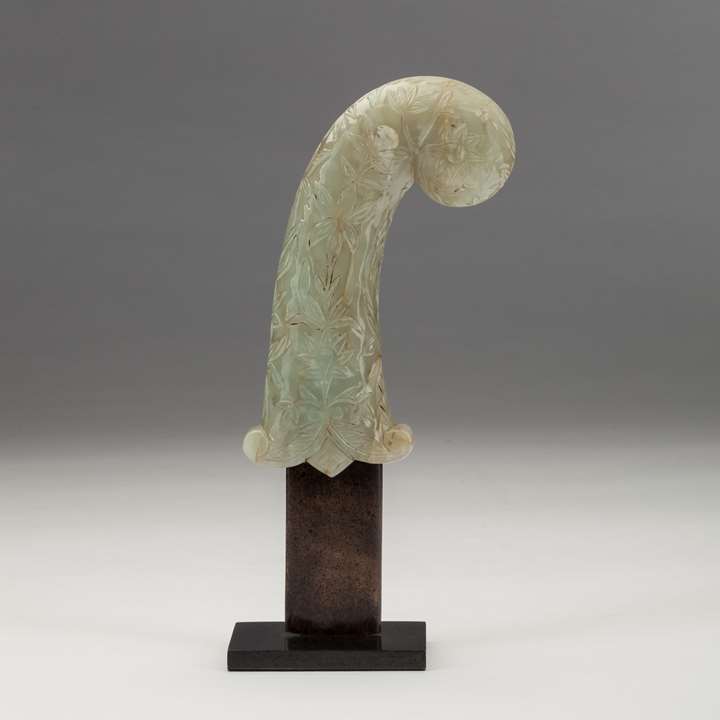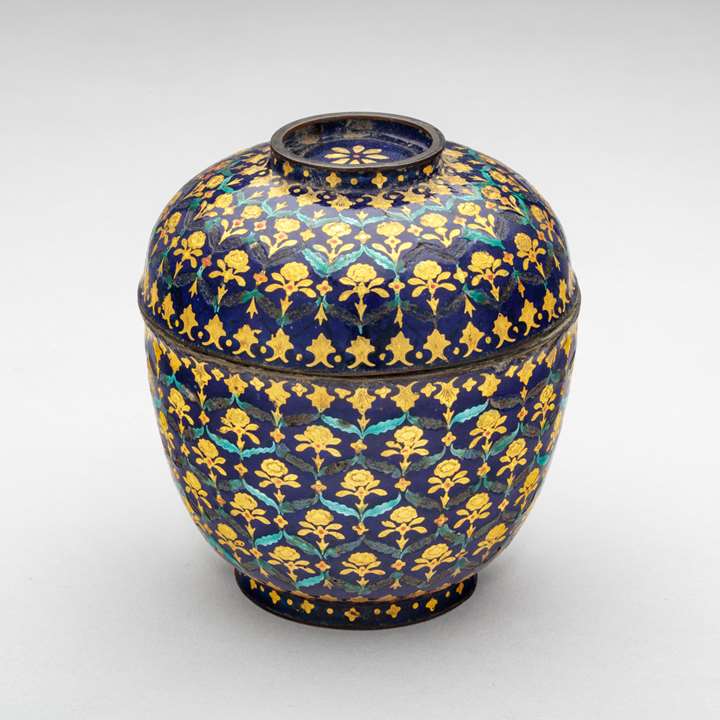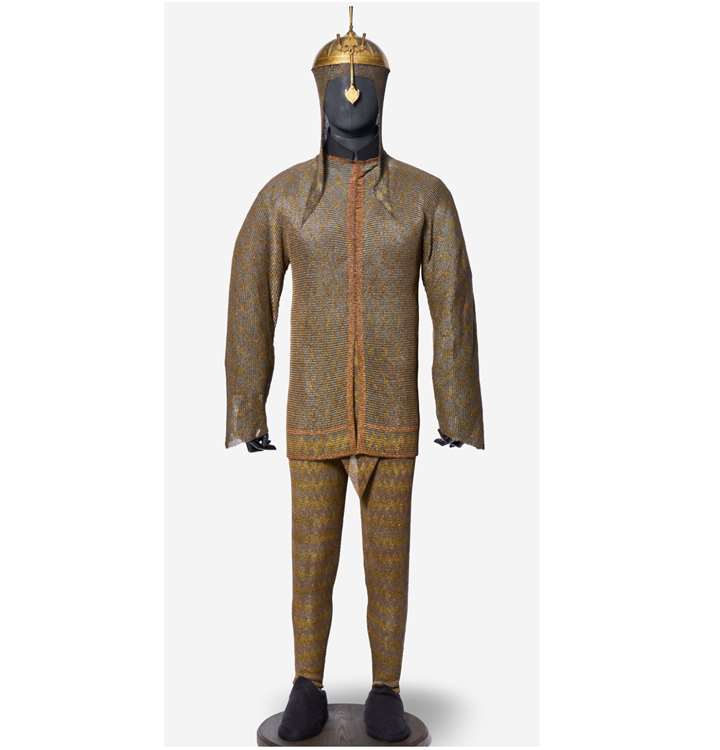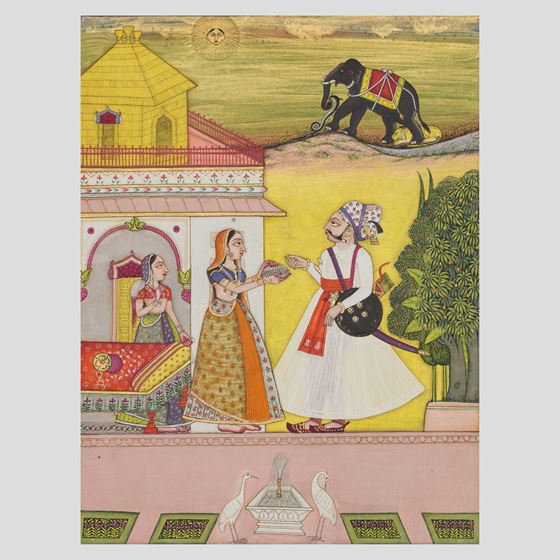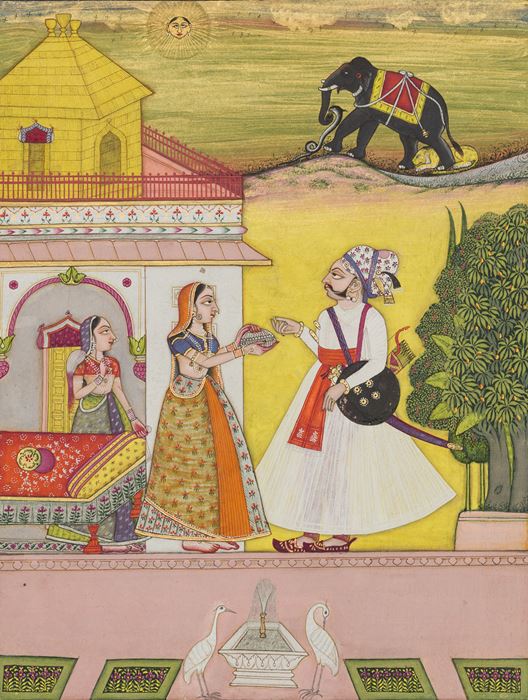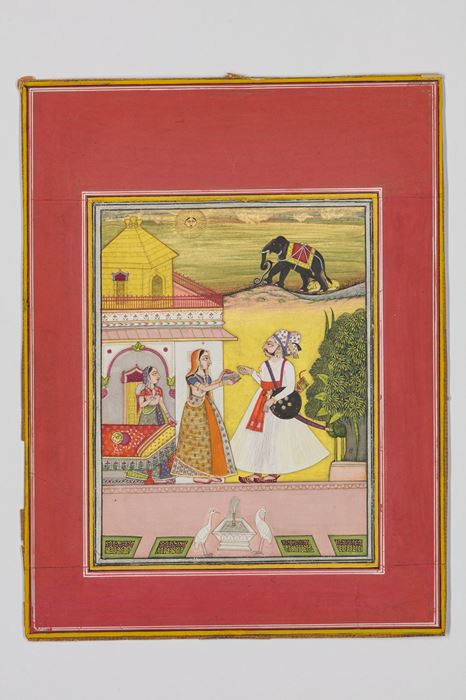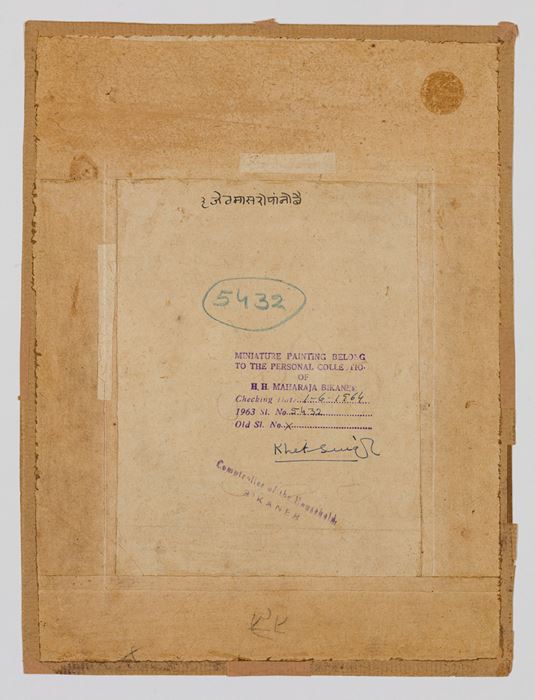Description & Technical information
A painting depicting Jeth or Jyeshtha Masa, which is the summer month of May-June. The main theme of the Baramasa paintings is that of the love of nayakas (heroes) and nayikas (heroines) and their relationship across the twelve months of a year. One sees them in their union, separation, and reunion over time.
In this painting, a woman is standing in front of a bed set up on the threshold of a pavilion and handing a paan daan to her lover, who faces her. A servant holding a fly whisk stands behind her, next to the decorated bed which awaits the couple in the shade. In the courtyard that they are standing in are mango trees laden with mangoes, further indicating the summer season. The heat of summer is also evident from the radiant sun with blazing rays in the sky. In the background on the hill, a lion rests between the legs of an elephant. The elephant itself has a snake clinging to its trunk. This is meant to depict the extent of the heat that is forcing coexistence between animals instead of animosity towards each other. Two cranes stand in the foreground of the painting, on either side of a fountain, among flowerbeds, representing the union of the two characters and their togetherness. The fountain in the courtyard would also provide some respite in the heat as well as a pleasing sound, allowing for the couple to relax.
A nagari line on the reverse reads ‘Jeth masa ro pano be’.
Some other depictions of this Jyeshtha Masa scene are at the LA County Museum (AC1999.127.12), the Harvard Art Museum (1995.124), and the British Museum (1960,0213,0.2).
French private collection
Stock no.: A4346
Date: c. 1700
Period: Early 18th century
Origin: Bikaner, Rajasthan, India
Medium: Gouache and gold on paper
Dimensions: 28.9 x 21 cm (11³/₈ x 8¹/₄ inches)
Provenance: The personal collection of the Maharaja of Bikaner, stock no 5432, stamped by the Comptroller of the Household, 1964.
Categories: Paintings, Drawings & Prints
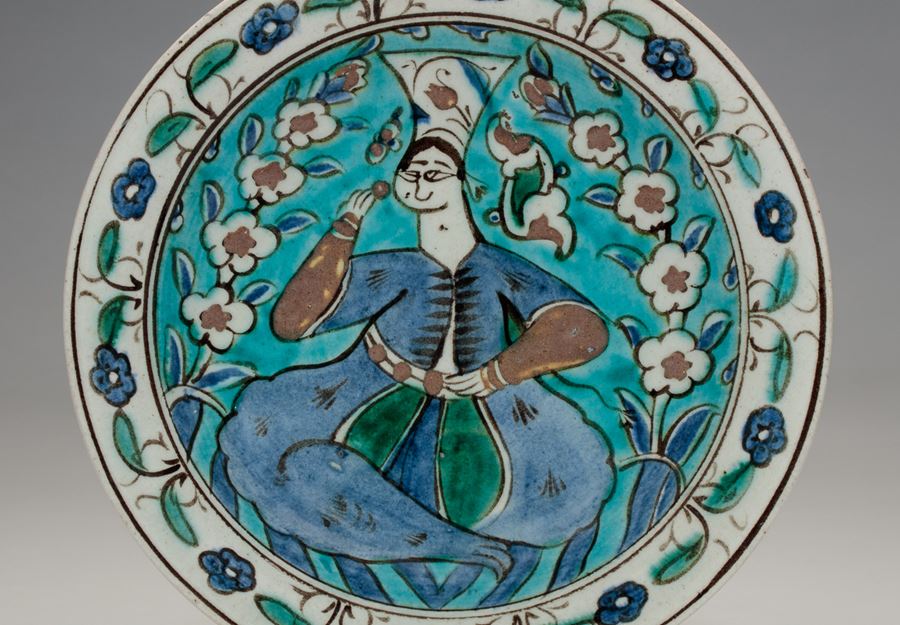
Discover the gallery
Amir Mohtashemi Ltd.
Indian,Islamic and Cross-Cultural Works of Art
More Works From This Gallery
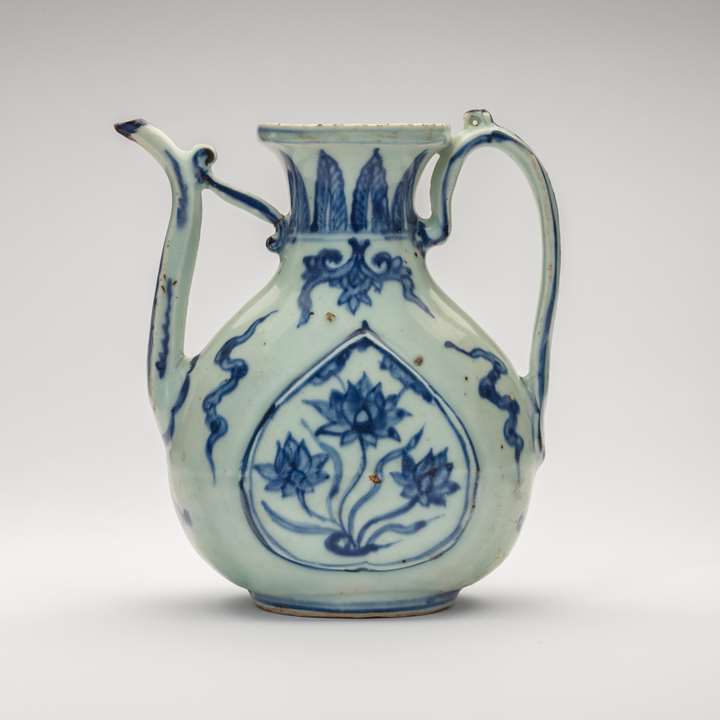
Amir Mohtashemi Ltd.
A Chinese Blue and White Ewer made for the Islamic market
_T637862262928625908.jpg?width=720&height=1200&mode=max&quality=60)
Amir Mohtashemi Ltd.
Cloisonné and Gilt-Bronze Bottle (ṣurāḥī)
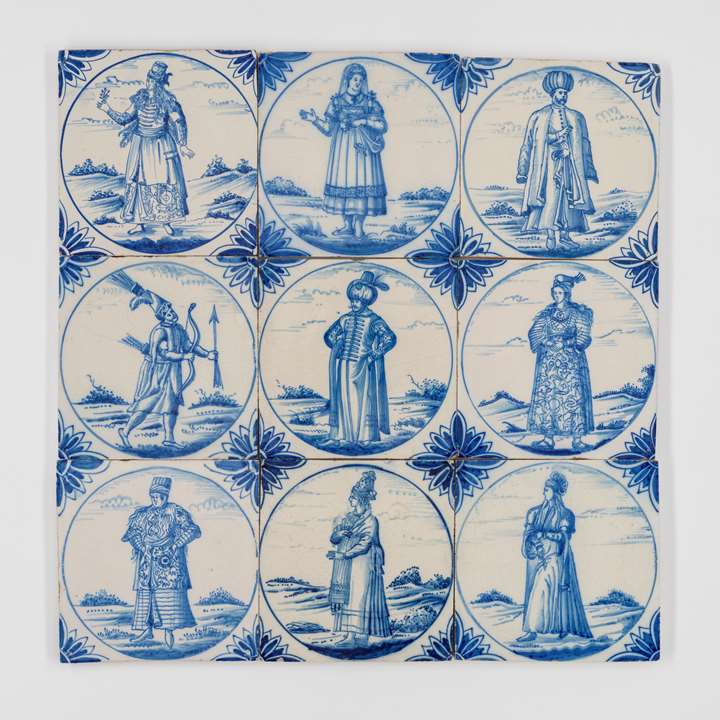
Amir Mohtashemi Ltd.
